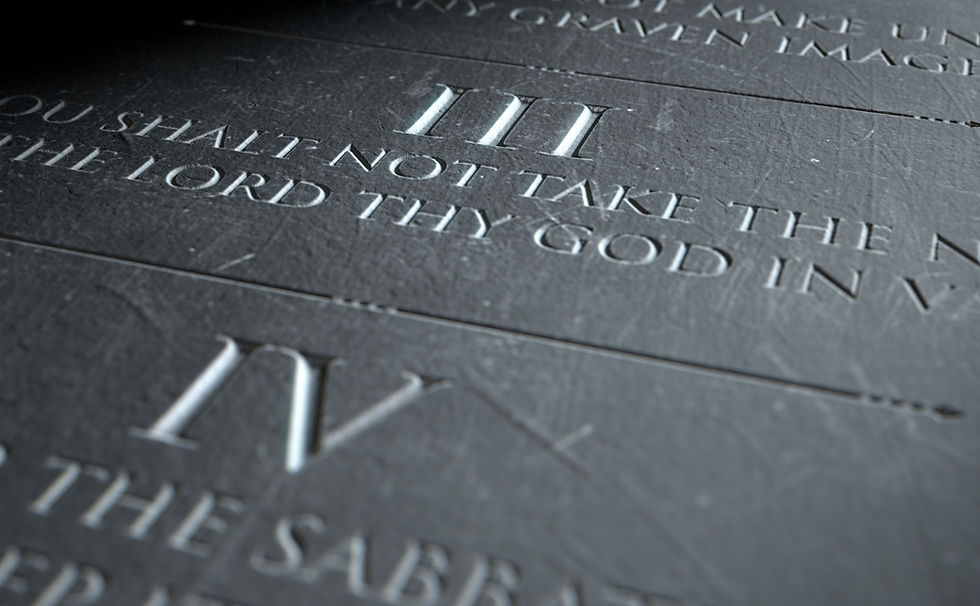The Brethren is a Reminder That the Roe Court Was Wrong, and Knew it the Whole Time
- Russell Withers

- Jun 29, 2022
- 4 min read

Photo credit: Bob Korn / Shutterstock.com
With the United States Supreme Court’s recent holding in Dobbs that there is no constitutional right to an abortion, the Court overruled both Roe v. Wade and Planned Parenthood v. Casey, which held that the Constitution did, in fact, protect such a right. Much has been said about Roe’s shaky legal foundation, which I agree with and will not rehash here (Andrew C. McCarthy does so ably at NRO), but I have been thinking about Bob Woodward and Scott Armstrong’s excellent book on the Burger-era Supreme Court, The Brethren, which I read nearly 15 years ago before entering law school. Published in 1979, The Brethren is described as “the first detailed behind-the-scenes account of the Supreme Court in action. . . [to] give us an unprecedented view of the Chief and Associate Justices — maneuvering, arguing, politicking, compromising, and making the decisions that affect every major area of American life.”
I highly recommend the book in any case, but I remembered that the entire timeline of Roe v Wade from the Justices’ perspectives is covered. It tracks everything from closed-chamber discussions before oral argument (and re-argument) all the way through Justice Harry Blackmun’s process in writing the opinion, the highly political negotiations behind who would sign on to the opinion and why, and the announcement of the decision. It discusses the Justices’ views on the constitutional right to abortion (or lack thereof), and, quite frankly, confirms what conservatives have been arguing since Roe was decided: It was arbitrary, politically motivated, based on the policy preferences of the Justices, and is unmoored from the United States Constitution. Here are a few passages worth revisiting:
(Note: Roe v. Wade was a 7-2 decision, with Justices Rehnquist and White dissenting. None of these passages discuss the dissenters. These passages all describe the opinions, thoughts, and considerations of the majority votes.)
Justice Blackmun, in the early stages of considering Roe, is described as feeling sympathetic to abortion advocates, but generally feeling that the states’ legislative prerogative should be protected (Page 199):

Justice Stewart is described as not wanting to “create another new constitutionally based right” to abortion, an admission that he understood that the Court was inventing the constitutional right to abortion where it did not exist. (Note: the referenced 1965 decision was Griswold v Connecticut, which recognized a right to privacy through constitutional penumbras and zones, and which prevents states from making contraception for married couples illegal) (Page 201):

In a particularly damning and grotesque passage, Woodward and Armstrong describe Justice Stewart’s view that abortion is “one reasonable solution to population control.” (Page 201):

In this passage, Justice Blackmun is described as being concerned not with writing a sound legal opinion or issuing a decision firmly rooted in the Constitution, but with having “an opportunity for the Court to ratify the best possible medical opinion.” In other words, he is concerned with getting the policy correct, which, in our system of government, is the legislature’s job (Page 210):

Justice Stewart, upon reading an early draft of Roe, is described by Woodward and Armstrong as “disturbed” to learn that Blackmun’s opinion “seemed to create a new affirmative constitutional right to abortion that was not rooted in any part of the Constitution.” (Page 221):

Woodward and Armstrong describe the thought process of Justice Powell, who concludes that the Constitution does not provide “any meaningful guidance” on abortion, and so he will “vote with his ‘gut’.” He is described as a yes to vote down the abortion restrictions at issue in Roe no matter what. “He needed only a rationale for his vote.” In other words, he would vote based on his policy preferences no matter what he thought the Constitution commanded (Page 276):

As Justice Brennan considers Justice Blackmun’s “viability” standard, he points out that science and medicine may advance to the point where viability is established so early that it “could undermine” the right the Court will create. History would prove him largely correct (Page 277):

In this passage, Woodward and Armstrong describe the Justice’s clerks as “embarrassed” by the “dishonest” opinion, which “derived more from medical and social policy than from constitutional law.” Indeed, “The Court was going to make a medical policy and force it on the states.” “As a constitutional matter,” they called it “absurd” and labeled the opinion “Harry’s abortion.” (Page 280):

Justice Stewart, not to be outdone by his own comments on abortion being a good method of population control, is described in this passage as finding it “imperative” that a fetus not be considered a person. That way, it would not have any rights of its own (like, for example, the right to life) (Page 280):

In what now looks like a window 50 years into the future, Justice Stewart expresses concern for the Court’s abuse of using “substantive due process” as a way of becoming “a superlegislature.” (Page 281):

Throughout The Brethren, the process by which Roe was decided is described precisely as its opponents contend. It was an open secret that the Court was engaged in naked judicial activism, imposing their own will and policy preferences instead of ruling based on the law and the Constitution. It is no wonder that the decision sparked the conservative legal movement that it did. Roe’s road to Dobbs should serve as a cautionary tale to would-be judicial activists. Enacting preferred policies is the responsibility of Congress and the state legislatures, not the courts.










